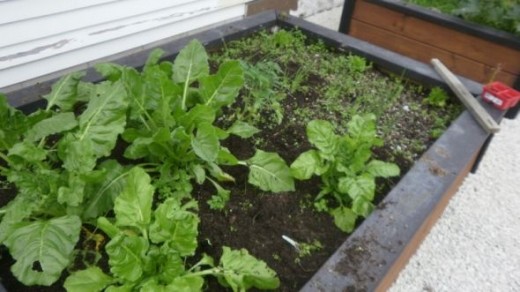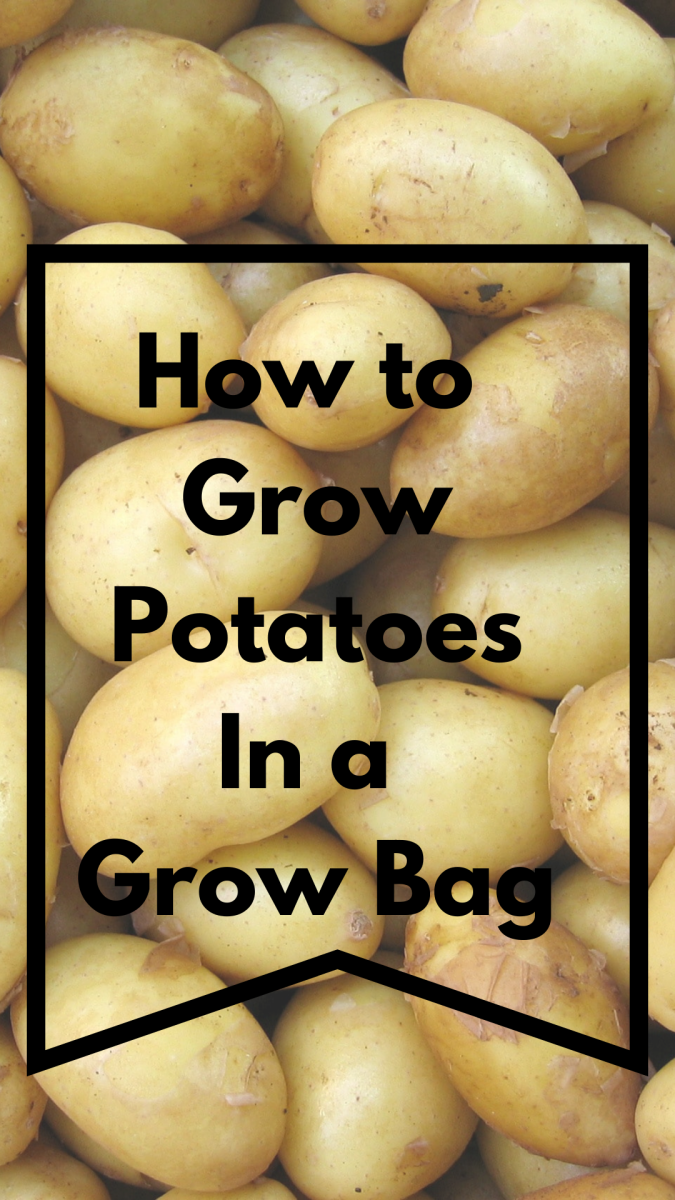How to Grow Great Garden Goodies (in the suburbs)
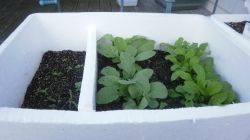
How to get great food from a restricted space.
Ever wanted to grow your own vegetables? Stuck for space? Let's face it, most of our city apartments might be great for access to the local shopping malls or even work, but try to swing a cat round (as the saying goes) and you'd have a very unhappy and dazed pet, not to mention possible prosecution for the cruelty! They are not the biggest places in the world!
In this lens I want to explore some inexpensive ways of maximizing the little space that we do have and show some of what can be achieved with a little creativity and not a lot of money (or time).
To me, there's nothing more relaxing than coming home after a long shift at work, stepping out where the plants are and seeing that lovely greenery, knowing that some of those plants are what we'll be eating, juicy tomatoes, healthy zucchinis, spicy radishes not to mention the fruit we have.
Read on and find out how to maximize your space with some of these great little tips.

How much space?
Garden, planter boxes or window boxes?
Really this is the first question you need to ask yourself. How much space do I have? Some will have a small backyard, but others will only have a windowsill, don’t despair! Better to know from the start what you’ve got and work with that, you’d be surprised what you can fit into a window box, lettuce, spring onions, radishes, leeks, shallots and even garlic are just a couple that spring to mind (get hold of a good gardening book and that will help you think it through!)
It should be said at this point that some will be thinking about growing stuff using a system called Hydroponics at this moment, where it’s grown in a controlled environment dripping water onto the plant but using almost no soil, the great thing about hydroponics is that it takes up very little space, BUT you need the right equipment and that can be expensive! You also need a space cupboard that you can put the stuff into.
One thing to point out is that we don’t have to put all the plants into pots on the porch, a good example of that is cherry tomatoes can be planted in hanging baskets and make great edible decorations over the doorway, or hung from the eaves outside the apartment window, imagine your friends reaction when they see you picking that “funny looking berry” hung outside the door and popping it into your mouth (wait for the shock factor to wear off before explaining it’s a tomato!). in fact just about every ‘climbing’ plant can be planted this way! All you’re doing is inverting the climber!
Garden veggie boxes
These actually don’t take up a lot of room and are relatively easy to make. You can even make them by recycling old crates and boxes you pick up from the supermarket. They make great planter boxes and with just a little ‘dab’ of paint they can make something mundane really stand out.
Using a veggie or planter box is all about making life easy, they can also be used by people who have big gardens, but the joints are getting a ‘bit stiff’ and you really don’t want to be bending down all the time, effectively you ‘bring the mountain to Mohammed’ as th saying goes.
One thing to remember with them is the space needed for the root systems.
for most veggie and garden boxes the way of how to set them up is the same, so from this point on we'll be looking at how to put one together.
Books on Hydroponics - read all about it before trying
Read up before you try. that's the key, have an idea what to do, and find out from the experts
Some hyrdoponic systems - for those who want to have a go hydroponically
Some of the more addenturous might want to try this method of growing. here's a bit of what you'll need for hydroponics
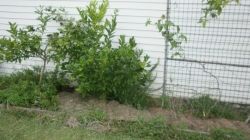
The Vegetable patch
Creating one.
Once we know how much space we have we'll be able to look at what vegetables we can grow and what kind of method we can use.
I have to admit that some vegetables are easier to grow using one way and some are easier to do using others, we'll look at each of the three systems and discuss the basics of using each one.
We've looked at what we've got and the decision is that we've got a bit of a back yard and we'd like to use some of it to create a veggie patch, but how?
With the veggie patch, make sure that it's "facing the sun" in other words that it doesn't get shade for much of the day, having most veggies in the shade will slow their growth so much that it's just not worth growing any.
Having said that, some plants (like pumpkins) like partial shade and will do well in such a situation, but don't try planting tomatoes as they need the sun and will do very little.
Depending on how warm your climate is there will be some plants that you can plant directly outside into the soil, but for others it might be best to grow them inside in a pot. Most brassicas like broccoli and cauliflower can be grown outside in all kinds of weather (except for snow). Brussels sprouts, for example actually need frost to help them grow properly!
Marking out the plot
The easiest way to mark it out is using a ball of string. Down at the local hardware store you can get a ball of builders string, this is the best to use as it's tough and good for use in all weathers, it doesn't deteriorate too quickly and can be cut easily but won't break (A major plus as it could be in the ground for a few weeks while you decide on what to use for the edging!
1. Draw a diagram of the shape of your yard, try to draw it to scale of say one inch to one foot, this will give you a good idea of what the end result is going to look like well before you've dug the first spade full.
Put everything in the drawing that's already in the yard and is going to stay, e.g. washing lines, trees, decking, tables and chairs. Now we're beginning to see what things look like.
Now pencil in lightly the area where you want the veggie patch to go. Now you can see how big it will be and it'll give you an idea of how much you can expect to produce. Brassicas can be expected to take about four months to grow and by careful harvesting you can get up to five heads (one large and four small) over a three week harvesting period. But Rhubarb plants take up the same space (if you like it) and you can expect a kilo (just over two pounds) every couple of weeks for the whole summer, then the plant will die back in the winter and come back even bigger and stronger in the summer until you get about two kilos every two weeks after about three years. Rhubarb does like a bit of shade though and is great for making pies and crumble.
Once the drawing is done then the next step is to sit down and talk it over with your partner, this can be a great for you as a couple as it gives the other party, who will also be enjoying the food ownership in the project and it'll make you feel ten feet tall (there's nothing better than enjoying a project that you know is going to be good for your health, produces tasty food and will save money in the long run.
2. Take the string and secure it to a stake of some kind. These can be bought relatively cheaply at the same hardware store you get the string from, using builders stakes would be ideal, but not essential. Find a corner where your patch will be, preferably one that borders onto your fence and sink the stake in for about six inches keeping the string just clear of the ground. Once that is in then run the string out to the next corner, keeping the string tight sink the next stake in about six inches and wrap the string round the top a few times and pull tight, you now have your first edge to dig to.
3. Now head to the next corner you have for the veggie patch and repeat until you end up back at your boundary fence or back at the point where you started, congratulations, you've just marked out your veggie patch.
4. The next step will be to decide what kind of edging you want, to be honest you don't have to put edging in right away as it can be time consuming and a little more costly than you would want (this lens is about saving money so I'm not going to deal with edging just yet, but if you want me to at some time then put a comment in the guestbook area and I'll do something about it later. (maybe another lens) But for the time being what needs to be done is dig around the edge, just inside the string. Great, you've just created your edging. Now all that needs to be done is to dig over all the rest of the patch, by doing this you'll loosen up the soil so that the worms can get in and break the soil up, thus helping the plants to grow, from now on worms are your friend! Put any you find in the veggie patch!
5. Fortifying the soil. This is where you add the fertilizer compost or potting mix, these can be bought for a small price from most garden centers, and most of them are pretty good, but if you want organic veggies then go for the certified organic compost or potting mix. But there is a cheaper way that will give you an almost limitless supply of compost that only you'll know how organic it is as you've put the stuff in, in the first place, but rather than me "re-invent the wheel take a look at the two sites I've linked at the bottom of this part of the lens.
Another method that was used in the old days was called "trenching". This is where you dog a hole and bury your compost or kitchen scraps directly into the soil. The hole needs to be about twelve to eighteen inches in depth and you fill it to about six inches below the surface then cover the remaining with the topsoil. Some plants love to gorge themselves (nature's gluttons) and really thrive with this method. Tomatoes spring to mind immediately as they produce spectacular results with the trenching method. The rule of thumb is no inorganic (meat) or processed stuff in the compost, but teabags and coffee grounds are both great as they are good for the soil and the caffeine in them helps to control slugs and snails (it kills them as it gives them a heart attack). Unfortunately it probably does the same for worms who are your composting friends.
Once you've got the compost under way and you've either got your first lot or bought some from the garden center then it's time to dig it in. this should be done in the early spring, before any planting is done. All you do is simply dig the soil and turn the spade over, break up any big clumps and move on to the next clump until the whole patch is done.
The kind of crops that work well in a veggie patch or large veggie boxes
1. Root crops (Beetroot, Carrots, Parsnips)
2. Most brassicas
3. Pumpkin
4. Potatoes
These are just a few of the veggies that can be grown in a veggie patch.
Fruit
!. Rhubarb
2.Strawberries
3. Most fruit trees
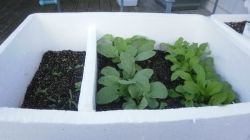
The "backyard"
When there's no soil
Not all of us have the pleasure of a 'back lawn' or yard that's got soil in it! Some of us are living in the urban jungle where space is at a premium and there's no space to dig a veggie patch, what to do?
First of all, don't despair! Those delicious veggies can still be yours to grow and you're not going to have to get an excavator machine in to dig it all up. Just a little creativity and a splash of paint to create color and you're well away.
Almost anything can be used to create a veggie box! From old orange crates to polystyrene boxes that fish are packed in. Both of these can be 'acquired' from the local supermarket of store by just asking, in fact my local supermarket has a stack of them next to the fish counter with a note saying for us to help ourselves, they are polystyrene and not 'recyclable' through the trash so the best thing for them is to re-use them, you'll be doing the world a big favor by doing so as it prevents them going into a landfill where they'll not be able to break down like normal rubbish. Better to re-use them and prevent having to make more.
The orange box
You need
1x Orange box
1x Plastic bin liner (preferably a black one)
1x Nail
1x Bag of potting mix
Take the bin liner and open it out, place the opened bin liner into to orange box and fold the edges over the side, pulling them down neatly so as to hide the box.
Next take a small nail and push a couple of holes into the bin liner, this is to allow the water to drain out when you water the plants.
Plants do need water to survive, but too much can drown the plant. The bin liner is totally waterproof and normally wouldn't let any water through, this is great for keeping things dry, but with plants, having too much water can kill them, by putting just one or two holes into the bag you allow the bag to hold the soil but lets the water slowly drain (it needs to be slow as that will reduce the amount of times you need to water the plant).
Once the holes are in you can fill the bag with the potting mix and plant out.
The kind of stuff that's great for the potting box like this are Chili plants, tomatoes (both in summer) lettuce, radishes herbs or any other small root veggies. Also you can put Brassicas in them (though they do tend to take up more room than they're worth in these) but carrots and parsnips tend to need to send their roots too deep to make them a viable option (unless you want to build one up so that it's about two feet deep)
The Polystyrene box.
This one is even easier to make, simply take the box, poke a couple of holes almost at the bottom and put the soil in! Here you poke the holes near and not at the bottom simply because you can leave some water permanently in the bottom to prevent drying out when you forget to water!
Some of these boxes are white and you may want to paint them, that's great, paint them whatever color you want as it's not going to affect them. The best thing about these is that you can get them from the local supermarket and they'll be glad to give them to you as they aren't recyclable and you're saving them some rubbish collection charges. The pictures you see are plants we grow in polystyrene boxes, I've got radishes, Basil, Rocket, Thyme and Lemon Thyme so far, but just about anything that can be grown in a veggie box can be grown in boxes.
Word of advice, don't try potatoes like this. I'll cover them in another lens sometime
Some great seeds - Get your planter box growing
Here are some great suggestions for the planter boxes you've just set up, once you taste the result you'll never want to go back to "Store bought"
Your favorite way of growing - what's your favorite way of growing veggies
